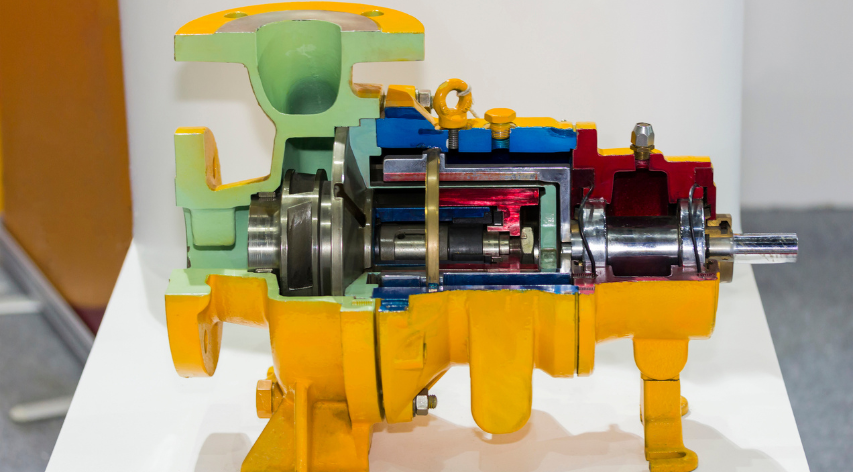Hurricane Harvey Recovery – Methodical Steps to Restart Your Plant


I personally went through Hurricane Rita and Hurricane Ike during my career living in the Gulf Coast. Restarting our plants after these storms was challenging, home life was miserable without power for three weeks and traveling over 100 miles north to find gasoline, food and water for family and neighbors was time consuming and hazardous. However, this experience pales in comparison to the challenges faced by families and operating companies from Houston to Corpus Christ and beyond recovering from the unprecedented events cause by Hurricane Harvey.
In this posting, I identify the challenges faced with our employees and plants as we restarted after these storms. Becht hopes this blog will help you and your companies through these trying times. Many of the personnel at Becht Engineering have been through hurricane recovery, plant restarts and emergency situations. Please contact us if we can help.
These important points must be considered as you recover from the storm:
- A safe restart is the number one priority. There will be business pressures to restart quickly to capture incremental margin from price increases and lack of supply. These pressures must be resisted so that a bad situation does not become a personal safety, process safety or environmental event. In many cases a quick restart simply results in another shutdown and cascading pressures to get the plant on line. A methodical approach using checklists, procedures, qualified contractors and rested personnel is a much better approach.
- Hurricane recovery starts with hurricane preparation. Plants that have taken detailed steps prior to the storm will be in a much better position to start up successfully. This includes both physical preparation and detailed storm preparation procedures. These procedures define steps that include assuring loose materials in the units are picked up, corroded towers are checked for maximum wind load and guy wired as needed, ponds are drained to allow maximum storm retention, tanks are filled to avoid flotation and communication plans are in place. Communication protocols are critical since normal lines of communication may be unavailable and it is necessary to keep employees informed of the status of the startup.
- People will be distracted which can lead to safety and other issues. It is normal for the staff to be thinking of their family and homes during and after the storm. Staff may be unable to reach the plant due to road closures, lack of fuel and downed power lines. People who were in the plant riding out the storm will be exhausted. It may be necessary to hold a “stand down” on restart to allow people to take care of personal business and for the infrastructure in the impacted area to recover. This can include restoring power, clearing roads, providing fuel, restocking food and assuring the drinking water is safe. In this case start up may be delayed for some time.
- Contract resources for specialized work such as high voltage personnel will be in extraordinary demand for weeks following the storm. Plants must assure qualified personnel are performing recovery work.
PLANNING THE RECOVERY AND RESTART
 Actual recovery time depends on the situation and configuration of the plant. If the plant has emergency power for lighting and control systems, initial checkout can be started as soon as staff can come to the facility. It should be assumed that the high winds have caused water ingress in much of the equipment. The following steps should be taken to begin recovery. This should not be considered a complete and comprehensive list but rather guidelines to consider as recovery plans are developed. Becht Engineering has been involved in plant restart activities including storm recovery. We have a large staff of personnel with owner’s experience who can assist in the current recovery from Hurricane Harvey.
Actual recovery time depends on the situation and configuration of the plant. If the plant has emergency power for lighting and control systems, initial checkout can be started as soon as staff can come to the facility. It should be assumed that the high winds have caused water ingress in much of the equipment. The following steps should be taken to begin recovery. This should not be considered a complete and comprehensive list but rather guidelines to consider as recovery plans are developed. Becht Engineering has been involved in plant restart activities including storm recovery. We have a large staff of personnel with owner’s experience who can assist in the current recovery from Hurricane Harvey.
OVERALL CONSIDERATIONS
- Safe restart is the first consideration. A complete post-storm walk down of the plant should be conducted using checklists looking for items such as damaged equipment, loose insulation jacketing, potential falling objects, plugged drains, damaged lighting and power cabling, cable tray damage, slip hazards and visible water intrusion. These items should be prioritized and put into the computerized maintenance management system (CMMS) for planning and scheduling. Even though it is important to restart as quickly as possible, planned work is more effective and costs about a fourth of the cost of unplanned emergency work. Rework can also be minimized by good planning.
- The storm will have impacted equipment in unexpected ways. A brainstorming session may be useful to identify necessary tests and inspections that need to be done based on the severity of the storm and condition of the plant based on the post-storm visual inspection. This work should be performed by discipline specialists with plant experience.
- Contract resources such as high voltage contractors will be in short supply for some time following the storm. This means there could be delays to properly check out some equipment or systems. It is not a good idea to assume these systems are functional without being checked out by qualified personnel.
- The staff will be highly distracted with personal issues and exhausted from work at home and at the site. It is important to rely on checklists, procedures and inspections to assure steps are not missed in the restart process.
- The plant should establish communication with neighboring plants to coordinate restarts considering utility consumption, mutual aid, product distribution and other activities where the plants interact with each other and the infrastructure.
MACHINERY
- Check major rotating equipment lube consoles for water ingress, emulsions and overall oil quality. Change oil or use dehydration equipment based on lube oil testing.
- Check seal oil systems for water ingress. Change seal pot fluids as required.
- Check pump bearing housings for water. Change oil based on testing or observations.
- Check motors for water ingress. Dry out motors before restart.
- Check machinery switchgear prior to restart.
- Perform interlock system checkout.
- Review startup procedures before commencing machinery commissioning.
- Check vents and drains to assure no water is in the system especially for hot services.
- See this Becht blog for innovative seal recovery procedures for after a plant was submerged in ten feet of salt water during a hurricane. /blog/machinery-hurricane-flood-damage-innovative-seal-recovery-procedure
STATIC EQUIPMENT
- Check for damaged and loose insulation jacketing.
- Visually inspect equipment for water ingress.
- Determine if equipment has experienced wind loads in excess of design.
- Check PSV tail pipes for water ingress.
- Ensure that stainless steel that is exposed to salt water is cleaned off with fresh water if it operates above 140F to avoid Cl SCC.
TANKAGE
- Check floating roofs to assure roof has not sunk and tank drains are functional.
- Assure tank has adequate fill to avoid flotation.
- Check tank dyke drain systems to assure proper valve line up.
- Inspect tank insulation systems for damage.
- Check tank heating systems to assure they are functioning.
COOLING TOWERS
- Cooling towers are highly vulnerable to wind loading and can collapse.
- Inspect tower for damaged fill.
- Inspect for support member damage or collapse.
- Determine quality of cooling water.
- Circulate tower and restore correct chemical balance.
- Inspect fans and drive systems for damage.
ELECTRICAL SYSTEMS
- Utilize high voltage contractors or internal high voltage experts to inspect the system.
- Inspect all switchgear for water intrusion and damage.
- Check transformer oil systems.
- Discuss restart loads and procedures with power company.
- Inspect for downed power lines or exposed wiring.
INSTRUMENTATION
- Perform continuity and function check on instrumentation system.
- Check safety critical interlocks.
- Check cable trays and instrument leads for wind and water damage.
We are hoping for a safe and relatively quick restart for the critical Gulf Coast hydrocarbon processing infrastructure. Please contact Becht Engineering at any hour for support if we can help you with a safe restart.
or Call Rick Hoffman at
(281) 427-3900






